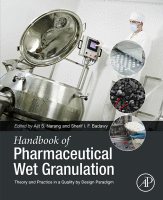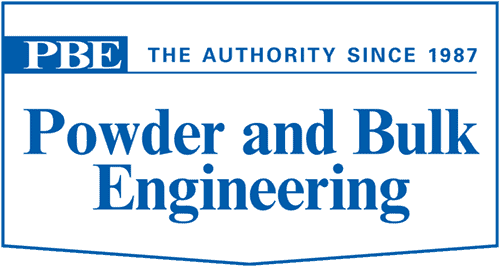Recognition
December 2, 2019 2021-11-16 9:01Recognition

The DFF sensor provides data rich process fingerprint in-line and in real-time with significantly higher sensitivity and data density (500 data points/s) to enable process design, scale-up, monitoring, and control applications. These studies indicate that DFF sensor can be valuable tool for wet granulation formulation and process development and scale-up; as well as for routine monitoring and control during manufacturing.

DFF sensors are robust instruments capable of detecting small differences in the properties of process materials with a high degree of sensitivity. These results show sensor’s ability to identify different phases of a mixing process and detect the point at which blend becomes homogeneous…These findings underline the relevance and value of DFF measurement as a technique for real-time powder process monitoring.

The data presented here demonstrate that in-line DFF measurements can be used to monitor the variation in granule properties during a HSWG process. The resulting FPM correlates with parameters delivered by at-line powder rheology techniques that have previously been shown to provide valuable data for optimizing HSWG processes in order to generate granules suitable for downstream processing.

Studies indicate that DFF sensor can be a valuable tool for wet granulation formulation and process development and scale-up, as well as for routine monitoring and control during manufacturing. Although this study did not intend to identify ideal granulation end point, these PAT tools can be correlated to end point established independently, such as by statistically significant correlations established through design-of-experiment studies of the effect of process parameters on drug product CQAs.



DFF sensor can be used as a tool to identify the end point of a WG process with respect to granule densification or wet mass consistency, and as a parameter to enable robust formulation and process design and efficient scale-up of WG processes. Overall, drag force measurement using a cylindrical probe appears to be a promising technology for real-time monitoring and control of HSWG.


In comparison with off-line rheometer, Lenterra Inline Rheometer demonstrated superior sensitivity to changes in the wet mass during granulation process.
I was involved in the application of Lenterra’s technology to monitor high shear wet granulation of small molecule drugs, including brivanib alaninate, placebo, and several formulations. Lenterra’s sensor, a millimeter-sized pin inserted into the powder, enabled observation of various stages of the granulation process on the computer screen that allowed us to predict granulation endpoints and develop scaling factors. The technology allows for concurring real-time measurements of three independent metrics that characterize granule densification, powder consistency, and temperature, respectively. In comparison with a conventional off-line rheometer, Lenterra Inline Rheometer demonstrated superior sensitivity to changes in the wet mass during granulation and greater repeatability. LIR appears to be a very promising tool for formulation development and pharmaceutical process monitoring. It is featured in our recent Handbook of Pharmaceutical Wet Granulation: Theory and Practice in a Quality by Design Paradigm.
Ajit Narang, Ph.D. VP, Chemistry Manufacturing and Controls ORIC Pharmaceuticals, Inc.

